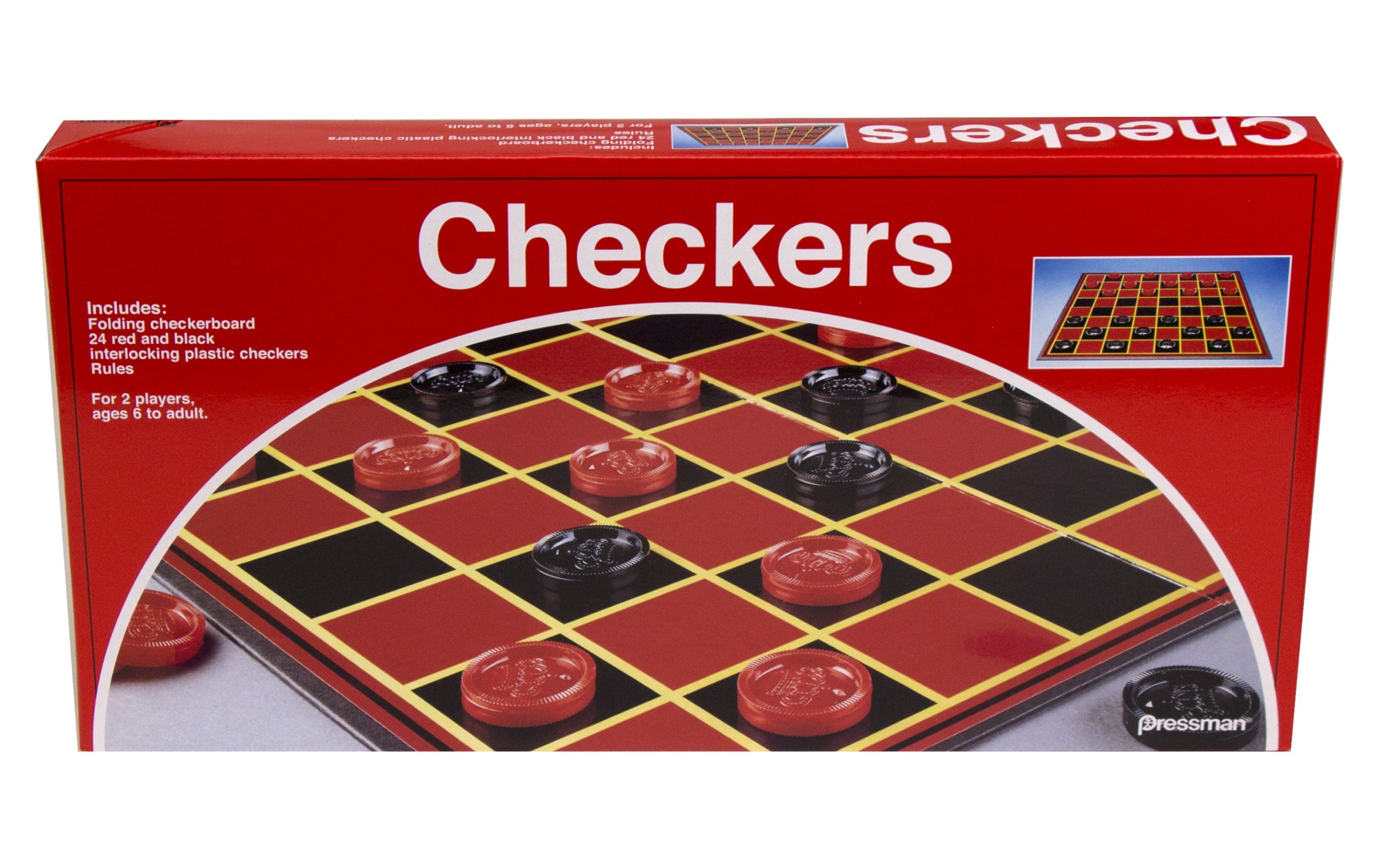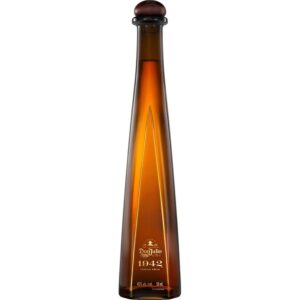Checkers is a classic board game played on an 8×8 grid with 12 pieces per player. The objective is to capture all opponent’s pieces.
Checkers, also known as Draughts, is a strategic and enjoyable board game. Two players face off on an 8×8 grid, each starting with 12 pieces. The game involves tactical moves, with players aiming to capture or block their opponent’s pieces.
Checkers requires foresight and planning, making it a favorite for those who enjoy mental challenges. Simple to learn yet difficult to master, it offers fun for players of all ages. The game’s rich history and widespread popularity make it a timeless classic, continuing to capture the interest of new generations.
History Of Checkers
Checkers, also known as Draughts, is a classic board game enjoyed by people of all ages. This game of strategy and skill has a rich history that spans centuries. Understanding the history of checkers gives us a glimpse into how this beloved game has evolved over time, from its ancient origins to the modern version we play today.
Origins Of Checkers
The origins of Checkers date back to ancient times. Evidence suggests that a similar game was played in ancient Egypt. Around 3000 BC, Egyptians played a game called Alquerque. This game is considered an ancestor of modern Checkers.
Alquerque was played on a 5×5 board and involved pieces moving diagonally. This game spread across the Mediterranean and evolved over time.
In the 12th century, a Frenchman adapted Alquerque by placing it on a chessboard. This new version, called Fierges or Ferses, became popular in Europe.
Here is a table summarizing the origins of Checkers:
| Time Period | Location | Game Name |
|---|---|---|
| 3000 BC | Egypt | Alquerque |
| 12th Century | France | Fierges/Ferses |
By the 16th century, the game had further evolved and became known as “Draughts” in England. The rules continued to change, setting the foundation for modern Checkers.
Evolution Of Checkers
Checkers continued to evolve over the centuries. The game spread to different parts of the world, with each region adding its unique twist.
In the 18th century, the game made its way to America. It was known as “Checkers” in the United States. The American version introduced new strategies and rules.
In 1847, the first Checkers tournament was held in Glasgow, Scotland. This event marked the beginning of competitive Checkers.
Over the years, various versions of Checkers emerged:
- International Draughts: Played on a 10×10 board, popular in Europe.
- Russian Draughts: Played on an 8×8 board, with unique rules.
- Brazilian Draughts: Similar to International Draughts but with slight variations.
Here’s a brief overview of different Checkers versions:
| Version | Board Size | Region |
|---|---|---|
| International Draughts | 10×10 | Europe |
| Russian Draughts | 8×8 | Russia |
| Brazilian Draughts | 8×8 | Brazil |
Today, Checkers remains a popular game worldwide. The game has a rich history that reflects its journey through different cultures and time periods.
Rules Of Checkers
Checkers is a classic board game enjoyed by people of all ages. The game is simple yet strategic, making it both fun and challenging. Understanding the rules of Checkers is essential for anyone looking to master the game. Below, we will explore the key rules and concepts that govern this timeless game.
Objective Of Checkers
The objective of Checkers is to capture all of your opponent’s pieces or block them so they cannot move. Each player controls 12 pieces, and the game is played on an 8×8 board with alternating dark and light squares. The game starts with each player’s pieces placed on the dark squares of the three rows closest to them.
Key points to remember:
- The game is won by capturing all of the opponent’s pieces.
- You can also win by blocking your opponent so they cannot make a legal move.
The game encourages strategic thinking, planning several moves ahead, and keen observation of your opponent’s actions.
Setup Of The Game
To set up the game, follow these simple steps:
- Place the board between the two players so that each player has a light square in the bottom-right corner.
- Each player takes 12 pieces of one color.
- Place the pieces on the dark squares of the three rows closest to each player.
Here’s a quick reference table for the initial setup:
| Row | Player 1 Pieces | Empty | Player 2 Pieces |
|---|---|---|---|
| 1 | Yes | No | No |
| 2 | Yes | No | No |
| 3 | Yes | No | No |
| 4 | No | Yes | No |
| 5 | No | Yes | No |
| 6 | No | No | Yes |
| 7 | No | No | Yes |
| 8 | No | No | Yes |
Movement Of Pieces
Understanding the movement of pieces is crucial in Checkers. Regular pieces move diagonally forward to an adjacent unoccupied dark square. Players take turns to move their pieces.
- Pieces can only move diagonally.
- Regular pieces move forward only.
- A piece can only move to an empty square.
Here’s how it looks on the board:
| Move | Description |
|---|---|
| 1 | Move forward diagonally to an empty square. |
| 2 | Regular pieces cannot move backward. |
Capturing Opponent’s Pieces
One of the most exciting aspects of Checkers is capturing your opponent’s pieces. A piece captures an opponent’s piece by jumping over it to an empty square immediately beyond it. The jumped piece is then removed from the board.
Rules for capturing:
- You must jump over an opponent’s piece if possible.
- Multiple jumps are allowed in one turn.
- Capturing is mandatory if a jump is available.
Example scenario:
| Move | Description |
|---|---|
| 1 | Piece A jumps over Piece B to an empty square. |
| 2 | Piece B is removed from the board. |
Promotion And Kinging
Promotion and Kinging add an extra layer of excitement to Checkers. When a piece reaches the opposite end of the board, it gets “kinged” and gains additional movement abilities.
Rules for Kinging:
- A piece reaches the last row on the opponent’s side.
- The piece is crowned, usually by placing another piece on top of it.
- Kinged pieces can move both forward and backward diagonally.
Kinged pieces are powerful:
- They can move backward and forward.
- They can capture pieces in any direction.
Here’s a quick look at the differences:
| Regular Piece | Kinged Piece |
|---|---|
| Moves forward only | Moves forward and backward |
| Jumps forward only | Jumps forward and backward |
Strategies And Tactics
Checkers, a classic board game, requires players to think critically and plan ahead. Strategies and tactics are vital for mastering the game. Knowing the right moves can turn a potential loss into a win. Let’s dive into the essential strategies and tactics that can give you the edge in this timeless game.
Opening Moves
Opening moves in Checkers set the stage for the rest of the game. A strong opening can give you control of the board and limit your opponent’s options. Here are some key points to consider:
- Control the center: Moving your pieces towards the center of the board gives you more mobility and control.
- Advance your pieces: Try to move your pieces forward as quickly as possible while maintaining a solid defense.
- Avoid early exchanges: Keep your pieces on the board to create more opportunities for strategic moves later.
Here is a table showing some common opening moves:
| Move | Description |
|---|---|
| 11-15 | Moves a piece from the second row to the third row, controlling the center. |
| 23-19 | Advances a piece forward while maintaining a defensive position. |
| 8-12 | Moves a piece towards the center, preparing for future jumps. |
Midgame Tactics
The midgame is where tactical play comes into focus. You need to position your pieces to create opportunities while defending against your opponent’s moves. Here are some tactics to keep in mind:
- Double jumps: Look for opportunities to jump over two of your opponent’s pieces in one move.
- Sacrifice pieces: Sometimes, sacrificing a piece can lead to a more advantageous position.
- Block your opponent: Position your pieces to restrict your opponent’s moves.
Consider these common midgame tactics:
- Setting traps: Lure your opponent into a position where you can make a double jump.
- Forks: Position your pieces so that your opponent must choose between losing two different pieces.
- King me: Aim to get your pieces to the opponent’s back row to promote them to kings.
Endgame Strategies
The endgame is the final phase of Checkers, where fewer pieces remain on the board. Winning in the endgame requires careful planning and strategic moves. Here are some strategies to consider:
- King your pieces: Getting your pieces to the back row to become kings can give you a significant advantage.
- Control the center: Maintain control of the center to limit your opponent’s movements.
- Avoid stalemates: Make sure your moves lead to a win rather than a draw.
Here is a table of endgame strategies:
| Strategy | Explanation |
|---|---|
| Positioning | Place your pieces to control key areas and restrict your opponent. |
| King movement | Use your kings to move freely across the board and capture pieces. |
| Opponent’s weaknesses | Exploit any weaknesses in your opponent’s setup to gain an advantage. |
Forcing A Win
To force a win in Checkers, you need to create situations where your opponent has no good moves left. Here are some tips to help you achieve this:
- Create a blockade: Position your pieces to block your opponent’s movements completely.
- Force exchanges: Set up moves that force your opponent to trade pieces unfavorably.
- King advantage: Use your kings to dominate the board and limit your opponent’s options.
Consider these tactics to force a win:
- Zugzwang: Put your opponent in a position where any move they make will be disadvantageous.
- Piece dominance: Use your superior number of pieces to control the board and trap your opponent.
- Endgame traps: Set up traps that force your opponent into losing positions.
Checkers Variations
Checkers is a beloved board game enjoyed by millions around the world. It is known for its simple rules and strategic depth. What many people don’t know is that there are several intriguing variations of Checkers. Each version has unique rules and strategies. Let’s explore some fascinating Checkers variations that add extra layers of fun and challenge to the game.
International Draughts
International Draughts is one of the most popular Checkers variations. It is played on a 10×10 board, which is larger than the standard 8×8 board used in American Checkers. Here are some key features of International Draughts:
- Board Size: 10×10 squares.
- Number of Pieces: Each player starts with 20 pieces.
- Movement: Pieces move diagonally forward.
- Capturing: Captures are mandatory and can be multi-directional.
- Kings: Kings can move any number of squares diagonally.
International Draughts requires players to think several moves ahead. The larger board and more pieces add complexity to the game. This variation is popular in Europe and Africa. It is also the version used in official international competitions.
Turkish Draughts
Turkish Draughts, or “Dama,” is a unique variation played on an 8×8 board. It has several distinct rules:
- Board Size: 8×8 squares.
- Number of Pieces: Each player starts with 16 pieces.
- Movement: Pieces move forward or sideways, not diagonally.
- Capturing: Capturing is mandatory and can occur in any direction.
- Kings: Kings move any number of squares horizontally or vertically.
One interesting aspect of Turkish Draughts is the movement of pieces. Since they don’t move diagonally, players need to adjust their strategies. This variation is particularly popular in Turkey and surrounding regions. It offers a fresh take on traditional Checkers gameplay.
Pool Checkers
Pool Checkers, also known as Spanish Checkers, is a variation that introduces some unique elements. It is played on an 8×8 board and has the following features:
- Board Size: 8×8 squares.
- Number of Pieces: Each player starts with 12 pieces.
- Movement: Pieces move diagonally forward.
- Capturing: Captures are mandatory and can be multi-directional.
- Kings: Kings can move any number of squares diagonally.
Pool Checkers is known for its aggressive gameplay. Players often engage in rapid exchanges of pieces. The mandatory capturing rule adds a layer of intensity. This variation is particularly popular in the Southern United States and parts of the Caribbean.
Czech Checkers
Czech Checkers, or “Česká dáma,” is a lesser-known variation but offers unique twists. It is played on an 8×8 board and has these features:
- Board Size: 8×8 squares.
- Number of Pieces: Each player starts with 12 pieces.
- Movement: Pieces move diagonally forward.
- Capturing: Captures are mandatory but only in a forward direction.
- Kings: Kings move one square diagonally.
This variation is popular in the Czech Republic. The forward-only capturing rule changes the dynamics of the game. Players must plan their moves carefully to avoid getting trapped. Czech Checkers adds an exciting twist to traditional Checkers gameplay.
Famous Checkers Players
Checkers has a rich history and is played by millions around the world. Over the years, several players have risen to fame for their exceptional skills and strategies. These famous checkers players have left an indelible mark on the game and continue to inspire new generations of players.
Marion Tinsley
Marion Tinsley is often considered the greatest checkers player of all time. His career spanned several decades, and his achievements are truly remarkable.
Key Achievements:
- World Champion from 1955 to 1962 and from 1975 to 1991
- Only lost seven games in his entire career
- Mathematician by profession, which helped his strategic thinking
Tinsley was known for his strategic depth and near-flawless gameplay. His matches were often described as a blend of art and science.
Interesting Facts:
| Fact | Details |
|---|---|
| IQ | Reported to be around 180 |
| Defeated | Computer programs like Chinook |
Derek Oldbury
Derek Oldbury, also known as “DEO,” was a prominent British checkers player. He was known for his unique style and contributions to checkers literature.
Key Achievements:
- World Champion in three-move checkers
- Authored several books on checkers strategies
- Invented many new openings and strategies
Oldbury’s contributions to checkers were not limited to his gameplay. He was also a prolific writer, sharing his insights and strategies with players worldwide.
Interesting Facts:
| Fact | Details |
|---|---|
| Books Written | Over 10 books on checkers |
| Innovations | Introduced multiple new openings |
Michele Borghetti
Michele Borghetti is an Italian checkers grandmaster known for his incredible memory and tactical acumen.
Key Achievements:
- World Champion in three-move checkers
- Set a Guinness World Record for simultaneous blindfold checkers games
- Defeated many top players in international tournaments
Borghetti’s skills are not just limited to checkers. He has also excelled in other mind sports, showcasing his versatile intelligence.
Interesting Facts:
| Fact | Details |
|---|---|
| Memory Feat | Played 23 simultaneous blindfold games |
| Multitalented | Excelled in chess and other mind games |

Credit: www.walmart.com
Checkers Championships
Checkers, also known as Draughts, is a classic board game enjoyed by people of all ages. Checkers Championships bring together the best players from around the world to showcase their skills and strategies. These events are not only a test of skill but also a celebration of the game’s rich history and global appeal.
World Checkers Championship
The World Checkers Championship is the most prestigious event in the checkers world. It has been held since the late 19th century and attracts top players globally. This championship determines the official world champion of checkers.
Key highlights of the World Checkers Championship:
- Annual Event: Held every year with participants from various countries.
- Historic Venues: Often hosted in historic locations, adding to the charm.
- Intense Matches: Games can last for hours, showcasing deep strategy and skill.
Below is a table of recent World Checkers Champions:
| Year | Champion | Country |
|---|---|---|
| 2020 | Alex Moiseyev | USA |
| 2019 | Michele Borghetti | Italy |
| 2018 | Sergey Belosheev | Russia |
Women’s World Checkers Championship
The Women’s World Checkers Championship is dedicated to showcasing the talents of female checkers players. This event highlights the importance of gender diversity in the game.
Key aspects of the Women’s World Checkers Championship:
- Empowerment: Encourages more women to participate in professional checkers.
- Global Participation: Women from different countries compete, promoting cultural exchange.
- Role Models: Champions serve as inspiration for young girls worldwide.
Here is a list of recent Women’s World Checkers Champions:
| Year | Champion | Country |
|---|---|---|
| 2020 | Amangul Durdyyeva | Turkmenistan |
| 2019 | Olga Balthi | Ukraine |
| 2018 | Zhanna Sarshaeva | Kazakhstan |
Computer Vs. Human Checkers Matches
Computer vs. Human Checkers Matches have gained popularity in recent years. These matches test the limits of human strategy against artificial intelligence.
Important points about these matches:
- Advanced AI: Computers use complex algorithms to play checkers.
- Learning Opportunities: Humans learn new strategies by playing against AI.
- Famous Matches: Some matches have become legendary in the checkers community.
Here’s a look at notable Computer vs. Human Checkers Matches:
| Year | Human Player | Computer | Outcome |
|---|---|---|---|
| 2007 | Ron King | Chinook | Draw |
| 1994 | Marion Tinsley | Chinook | Chinook wins |
| 2012 | Alex Moiseyev | Deep Blue | Alex wins |
Benefits Of Playing Checkers
Checkers, a classic board game, offers numerous benefits beyond mere entertainment. This timeless game not only provides fun but also enhances various cognitive skills. Playing Checkers regularly helps in mental development, making it a valuable activity for people of all ages. Let’s explore some of the key benefits of playing Checkers.
Enhances Critical Thinking
Playing Checkers requires players to think several steps ahead. This helps in developing critical thinking skills. When planning their moves, players must evaluate different scenarios and outcomes. Here are some ways Checkers enhances critical thinking:
- Analyzing opponents’ potential moves
- Identifying risks and opportunities
- Making informed decisions quickly
These skills are crucial in real-life situations. By practicing Checkers, players improve their ability to solve problems and make sound decisions. Consider the following table which illustrates the benefits:
| Skill | Application |
|---|---|
| Risk Assessment | Identifying potential threats in advance |
| Decision Making | Choosing the best option among many |
| Scenario Planning | Predicting future events based on current actions |
Improves Concentration
Checkers demands a high level of concentration from players. Each move can significantly impact the game’s outcome. Therefore, players must stay focused throughout the game. Here are some benefits of improved concentration:
- Better attention to detail
- Enhanced ability to stay focused on tasks
- Reduction in distractions
Playing Checkers regularly helps in building a stronger concentration span. This improved focus can benefit students in their studies and professionals in their work. The ability to concentrate well on one task at a time is invaluable.
Boosts Memory
Checkers also helps in boosting memory. Players need to remember past moves and anticipate future ones. This continuous mental exercise strengthens memory. Benefits include:
- Enhanced short-term memory
- Better recall of past experiences
- Improved cognitive functions
Playing Checkers is like a workout for the brain. It encourages players to remember patterns and strategies, thus boosting their memory. This can help in everyday tasks that require quick recall.
Develops Strategic Planning
One of the biggest benefits of Checkers is the development of strategic planning skills. Players must plan their moves carefully to outsmart their opponents. This involves:
- Setting long-term goals
- Executing a series of planned moves
- Adapting to changing situations
Developing strategic planning skills through Checkers can be highly beneficial in real life. Whether planning a project at work or managing personal goals, these skills are invaluable. The ability to think ahead and plan strategically is a key to success in many areas of life.

Credit: www.amazon.com
Checkers In Popular Culture
Checkers, also known as Draughts, is not just a board game. It has played a significant role in popular culture. This ancient game has appeared in movies, literature, and even video games. Its simple rules and strategic depth make it a captivating subject for various media forms.
Checkers In Movies
Checkers has made numerous appearances in films. It often symbolizes strategy, patience, and mental agility. Here are some notable examples:
- “The Color Purple” – In this film, the characters play Checkers to bond and pass time.
- “Searching for Bobby Fischer” – Although a chess-centric movie, Checkers scenes emphasize the protagonist’s love for board games.
- “Harry Potter and the Sorcerer’s Stone” – The giant wizard’s chess scene echoes the strategic nature of Checkers.
Checkers also serves as a metaphor in movies. It represents life’s complexities and the need for strategic thinking. Directors use it to highlight characters’ personalities and decisions. Thus, Checkers adds depth to cinematic storytelling.
Checkers In Literature
Checkers appears frequently in literature, adding layers to narratives. Authors use it to depict intelligence, strategy, and conflict resolution. Here are some famous instances:
- “Alice’s Adventures in Wonderland” by Lewis Carroll – The Red Queen’s game is reminiscent of Checkers, showing tactical movement.
- “The Catcher in the Rye” by J.D. Salinger – Holden Caulfield plays Checkers with Jane Gallagher, symbolizing his need for simplicity.
- “The Westing Game” by Ellen Raskin – Checkers is central to the mystery and character development.
Authors use Checkers to highlight character traits. It can show a person’s patience, intelligence, or competitive nature. Checkers scenes often symbolize larger themes in literature, making it a powerful literary device.
Checkers In Video Games
Checkers has also entered the digital realm. Numerous video games feature Checkers, providing a modern twist to the classic game. Here are some popular Checkers video games:
| Game | Platform | Features |
|---|---|---|
| Checkers Free | Mobile | Single-player and multiplayer modes |
| 3D Checkers | PC | 3D graphics and customizable boards |
| Checkers Online | Browser | Play against global players |
These games offer various features. Players can enjoy single-player modes or compete with others worldwide. The digital versions enhance the traditional game with new graphics and interactive elements. Thus, Checkers continues to captivate audiences in the gaming world.

Credit: www.checkers.com
Frequently Asked Questions
What Are The Basic Rules Of Checkers?
Checkers is played on an 8×8 board. Each player starts with 12 pieces. Pieces move diagonally forward. Capturing an opponent’s piece is mandatory. The game ends when a player has no pieces or moves left.
How Do You Win In Checkers?
You win in Checkers by capturing all your opponent’s pieces or blocking their moves. Strategy and foresight are essential.
Can A Checkers Piece Move Backwards?
Regular pieces cannot move backwards. However, once a piece is “kinged,” it can move both forward and backward diagonally.
What Happens When A Piece Is Kinged?
When a piece reaches the opponent’s back row, it is “kinged. ” Kinged pieces can move diagonally forward and backward, increasing their mobility.
Conclusion
Checkers offers a delightful mix of strategy and fun. It’s a timeless game enjoyed by all ages. Whether you’re a beginner or a seasoned player, there’s always room to improve. Dive into a game of checkers today, sharpen your mind, and enjoy quality time with friends and family.




